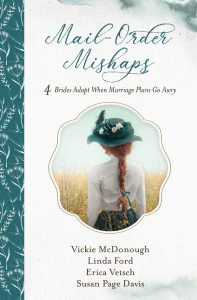by Erica Vetsch, @EricaVetsch
Marie Kondo is the host/driving force behind the newly-popular TV show Tidying Up on Netflix. She is an expert on helping people get rid of the ‘stuff’ weighing them down and holding them back.
While I am not ‘all in’ on some of her methods, I could see the parallels between de-cluttering a house and de-cluttering a manuscript.
Before you start, there are a few things to consider:
- Brace yourself. There will be parts of the procedure that are painful and hardYou’ve worked hard to create a story, and cutting and culling and arranging and adjusting can feel brutal. But keeping the goal in mind of a tighter, better story will help.
- Realize that no writing is ever wasted. Even the words you delete have/had value. You practiced, you found out something that didn’t work quite the way you wanted, or you found a great way to say something, it just doesn’t work for that particular scene or book.
- Don’t dive in willy-nilly. Have a plan, specific things you are looking for on each pass-through. (Yes, there will be/should be more than one.) Cutting without a plan isn’t surgery, it’s butchery. You’ll regret it, and you’ll decide editing isn’t worth it.
So, how do I intelligently and intentionally tidy up my manuscript?
Evaluate – Take a dispassionate look with an editorial eye at your manuscript. This can be difficult, especially if you’re diving right back into the story the minute you type ‘The End.’ If possible, give the manuscript a breather (and yourself, too) so you can come at it with fresh eyes and a bit of distance.
- Why are you hanging onto a particular scene or paragraph? – Does this scene perform a specific function? Can you articulate the goal, the conflict, the story question in each scene? Or are you keeping it because it’s beautiful and it was hard to write?
- Can you consolidate characters? – Sometimes we people our stories with secondary characters that we love but that don’t really do a lot. Do you have two older figures that mentor your hero or heroine? Can you consolidate them into one? Does your heroine have a handful of siblings where only two or three would accomplish the same goal?
- Has your prose drifted into purple regions? – Sometimes we fall in love with our words. Beautiful, flowery, practically-poetic words that feel like clouds and taste like rainbows. But purple prose kills forward momentum, and gives the reader an excuse to put the book down in favor of something else.
Reorganize – Map out the story, what you have, what you need, and what you don’t. You may write a synopsis before you begin your story, or you might free-wheel it through the writing and create a synopsis after, but either way, you should write a fresh outline once the story is completed. Even those who plot the story beforehand rarely stick exactly to that plan during the writing. When tidying up the manuscript, you must evaluate what you actually have written, not what you thought you would write.
- Does the story move forward in a logical way? – Does the timeline flow logically? Do you have a good balance of Point-of-view characters? Is there a feeling of urgency/are there story questions raised in each scene?
- Are your character goals apparent? – What do the characters want? Why do they want it? What is keeping them from getting it? Goal, Motivation, and Conflict keep readers’ noses buried in your book.
- Are your character arcs logical, natural-feeling? Have you dragged out the ending? Have you rushed it? Did the characters have the time and space they needed to become the changed people they needed to be by the end of the story? If parts feel rushed or dragging, edits are needed.
Cull & Cut – Dealing with extras that drag the story down. Evaluating and Reorganizing deal with ‘macro’ or big-picture edits. Culling and Cutting deals with ‘micro’ or line-by-line edits. Often, the culling and cutting phase will take the adequate to the brilliantly-polished in a few steps.
-
- Weasel words – just, very, suddenly, that…you can find lists of weasel words to avoid by using a quick Google search. Adapt the list to your own writing. Start with the basics, and then train your eye to find the superfluous words that don’t pull their weight.
- Adverbs – While you shouldn’t overuse adverbs, I think some are fine, as long as they are strong and descriptive. Only use an adverb when there isn’t a strong verb that fits.
- Back story dumps – Read the opening chapters of your book, picking out places where you tell things you think the reader needs to know. Have you sprinkled this information in, or have you plopped it all in the opening pages. Remember, back-story slows down the reader.
- Passive writing – Passivity is boring. Search for ‘state of being’ verbs, as these are a strong indicator of passivity in your writing. (Be, am, is, are, was, were, been, being, have, has had, do, does, did, may might, must, can, could.)
- Extra description or explanations – Resist the urge to explain what you’ve just shown. Trust the reader to get it without you drawing arrows around it and hanging bright lights to point the way.
- Repetitive sentence structure – Read your work aloud, and see if you’ve fallen into a repetitive sentence structure. Do you always use gerunds? Conjunctions? Vary your sentence length and structure to keep from lulling your reader to sleep with cadence.
- Pet words and phrases – Every writer has them. Favorite gestures, favorite words. For some, that favorite word changes from story to story. Are your characters always grinning, or smiling? Does everyone have blue eyes? Do the characters sound distinct? Keep it fresh by eliminating pet words and phrases.
Editing is difficult. It’s hard to ‘kill your darlings.’ I suggest creating a fresh document and cutting and pasting the scenes, paragraphs, etc. that you’re culling from the manuscript. If you decide you want to keep them after all, they will be in a handy place to find. Also, it’s psychologically easier to remove your hard-won words if you know they are being saved to a neat, clean document instead of being blasted into cyber-oblivion. (How’s that for a bit of purple prose?)
Dreams of Finding Mr. Right Go Wrong in the Old West — The Galway Girl by Erica Vetsch Kansas, 1875 A mail-order mix-up sends Irish lass Maeve O’Reilly to the Swedish community of Lindsborg, Kansas. Will Kaspar Sandberg consider it a happy accident or a disaster to be rectified as soon as possible?

ERICA VETSCH can’t get enough of history, whether it’s reading, writing, or visiting historical sites. She’s currently writing another historical romance and plotting which history museum to conquer next! You can find her online at www.ericavetsch.com and on her Facebook Page where she spends WAY TOO MUCH TIME! www.facebook.com/EricaVetschAuthor/


